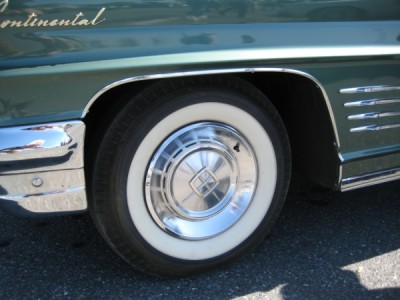By now you likely know that Blackburn OEM Wheel Solutions is not your average OEM wheel provider. We take pride in offering a number of additional products and services that set us apart from the competition. Our inventory of vintage hubcaps helps us to accomplish this goal, but it also makes…
The History of Hubcaps
When we purchase a car, there are always the extras we choose to splurge on to make our car just a little bit more “ours”. Seat covers, shifters, audio systems, window tint and metal finishes. Modern car enthusiasts can find a way to alter just about anything on their car to make a bold and unique statement on the road. However, no car can be considered fully customized without decorative hubcaps.

But where did these commonplace accessories get their start? The long history of the hubcap actually runs parallel to the history of car manufacturing. In present times, the hubcap, or wheel cover, serves a mainly decorative purpose but in the beginnings of the automobile, they served a very necessary function. The first wheels, usually made with wooden spokes, had a center hub for a steel wheel bearing. In order to rotate consistently, these bearings had to be packed with grease and kept as dust-free as possible. This hub then, needed a protective cap to keep it clean. Typically made out of nickel-plated brass, a cap was fashioned to do just that. Thus began the history of the hubcap.
While the wheel did not keep its wooden make-up for long, the hubcap continued to be a mainstay in the automobile industry. In the 1920s and 1930s, steel-spoked wheels replaced the old days of wood but they still required a cap to cover the center bearing hub. This time period also saw the beginning of snap-on styled hubcaps and by 1932 almost every car made included this feature of convenience.
The 1930s also saw the beginning of the hubcap as a customization accessory. The hubcaps began to be made larger and could be stamped with the automobile maker’s brand or emblem. Auto makers Cadillac and Hudson lead the industry even further when they made caps that covered the entire wheel, giving a flashy, streamlined and luxury look to their cars’ tires.
Leading into the mid 1940s, hubcaps took an even flashier look by taking on the car’s body color when pressed steel wheels became more and more common. This was also the time when the hubcaps themselves saw an improvement in their manufacturing with chrome plating and stainless steel. For the more luxurious-minded motorist, full-wheel covers gave a statement of class and status that beckoned envy on the roads. Cadillac capitalized on this idea and began to offer these full wheel covers on some of their top models – one of the most famous being the 1950 cover wheel that became known as the “Sombrero” due to its flashy chromed appearance that resembled a sombrero hat.
The 1970s brought about one of the biggest changes to the hubcap. ABS plastic wheel covers presented a more durable option while still being able to provide chrome or brushed steel appearance. Hubcaps made of plastic were a lot less likely to fly off of a vehicle, which was a major problem with the heavier, steel caps. The Chevy Mazda was the first American automobile to come with factory-installed plastic hubcaps and now most vehicle OEM hubcaps are plastic when they leave the factory.
While mostly known for their association with the automobile industry, hubcaps also have an interesting story in the art and design world. With a design featuring the Art Deco style, the Chrysler Building in New York actually pays tribute to the hubcap by including many of them overlapping each other at the top of the building. There are also ornamental automobiles below the eagles that show off some flashy hubcaps.
Replacement hubcaps are relatively easy to find for any make and model of vehicle, especially with Blackburn’s inventory offerings. Vintage hubcaps make a great addition to any collector’s garage or a classic car restoration. Maybe you are in the market for used hubcaps for sale – whatever your hubcap needs are call us today at 1-800-981-8321 to talk to one of our hubcap solution specialists.





